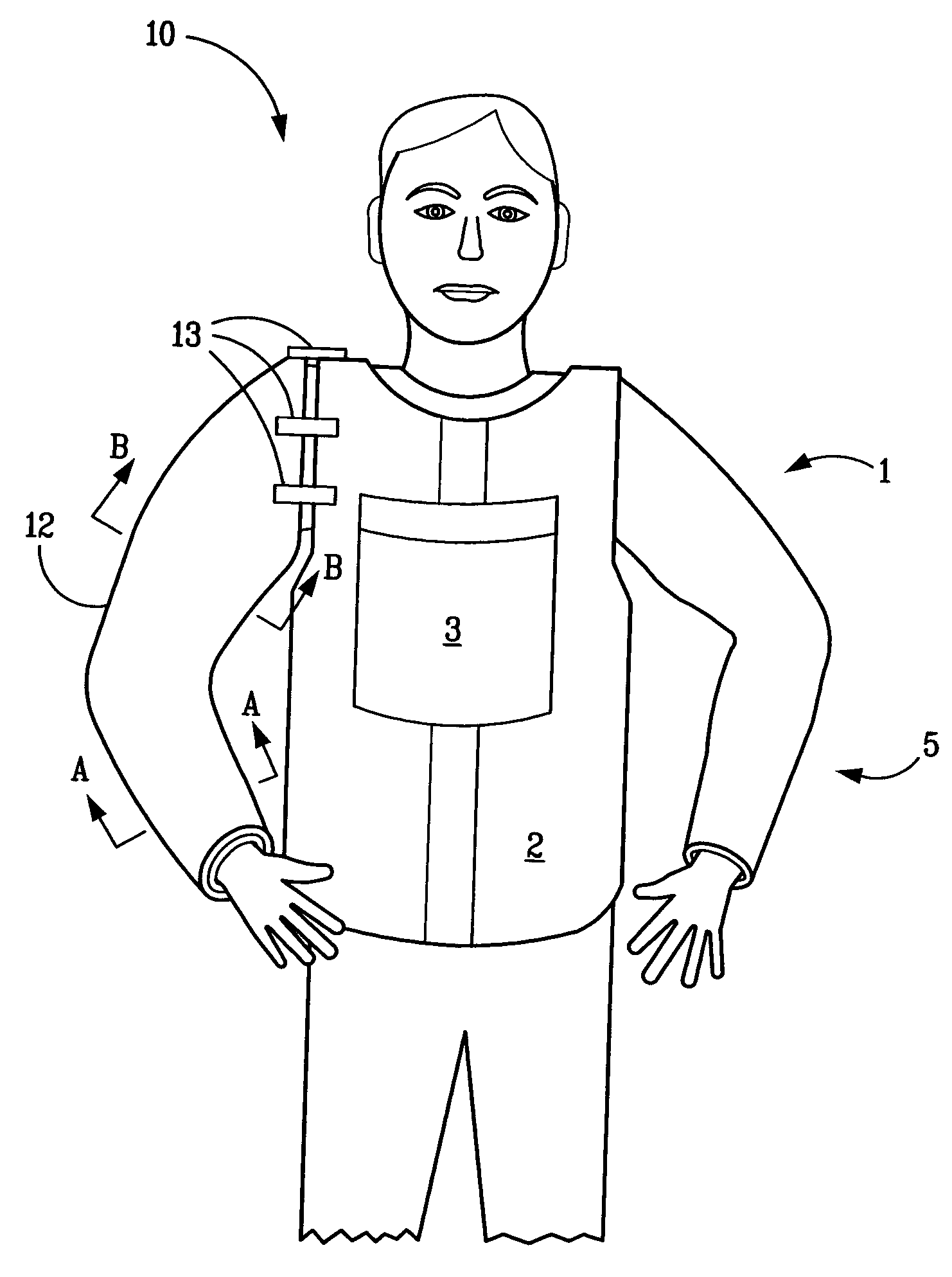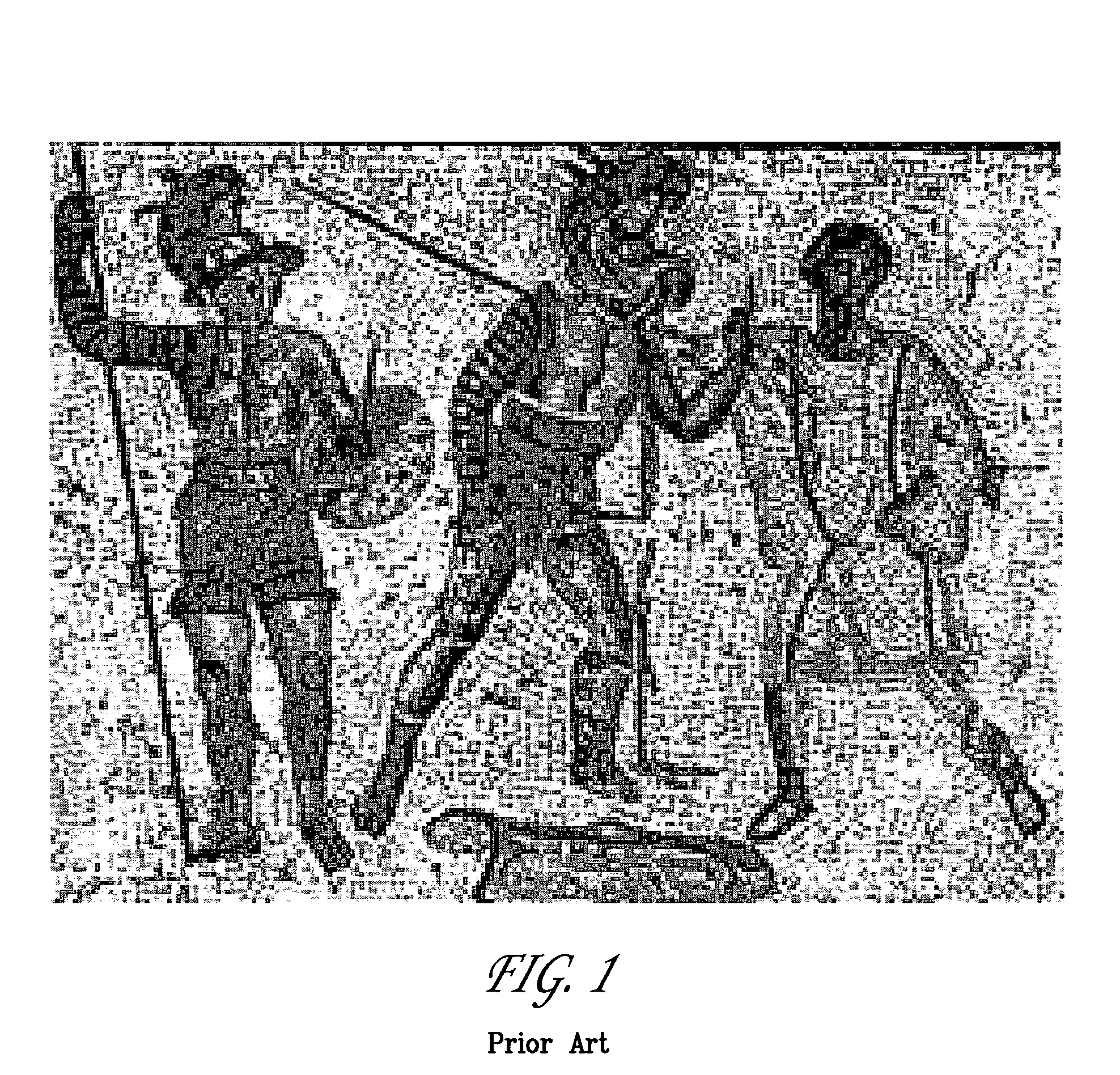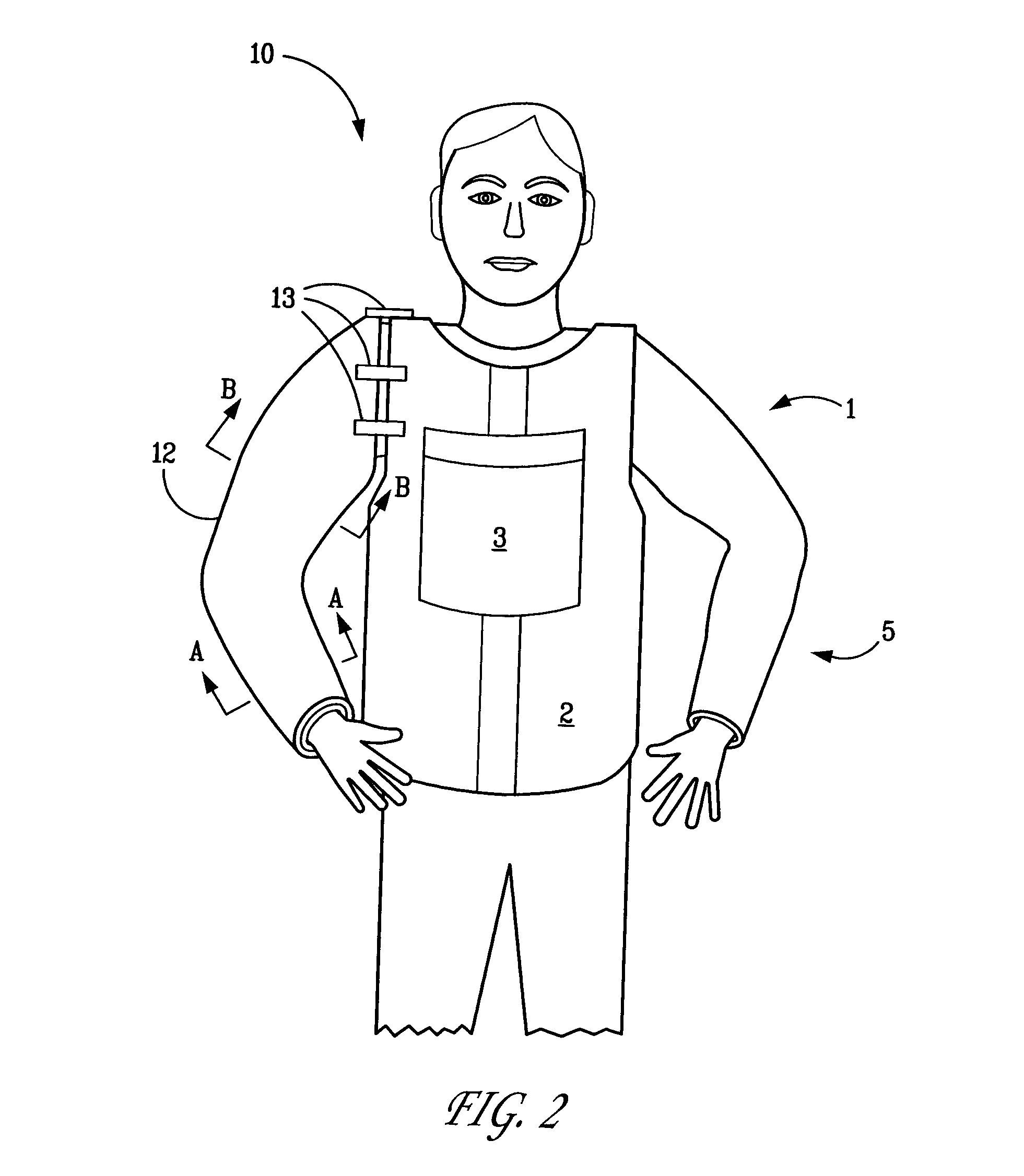Armored garment for protecting
- Summary
- Abstract
- Description
- Claims
- Application Information
AI Technical Summary
Benefits of technology
Problems solved by technology
Method used
Image
Examples
Embodiment Construction
[0028]The word “garment” traditionally means a glove with an extended cuff that covers the lower half of the forearm. In this application, however, “garmemt” means an shell or envelope that covers the entire length of the arm from wrist to shoulder in a continuous fashion, or that covers the entire length of the leg from ankle to hip in a continuous fashion. It can also extend past the wrist to cover the hands and fingers (or extend past the ankle to cover the feet and toes); as well as extending past the shoulder joint to cover the body in-between the shoulder joint and the neck. Additionally, as discussed later, the word “garment” is defined herein to also include protective, armored pant legs or leg chaps, covering the entire length of the leg from ankle to hip.
[0029]The phrase “rigid armor” typically means a plate of strong and tough material, such as a hardened steel, ceramic, high-strength titanium or aluminum alloy, etc. In this application, however, “rigid armor” also includ...
PUM
 Login to View More
Login to View More Abstract
Description
Claims
Application Information
 Login to View More
Login to View More - R&D
- Intellectual Property
- Life Sciences
- Materials
- Tech Scout
- Unparalleled Data Quality
- Higher Quality Content
- 60% Fewer Hallucinations
Browse by: Latest US Patents, China's latest patents, Technical Efficacy Thesaurus, Application Domain, Technology Topic, Popular Technical Reports.
© 2025 PatSnap. All rights reserved.Legal|Privacy policy|Modern Slavery Act Transparency Statement|Sitemap|About US| Contact US: help@patsnap.com



